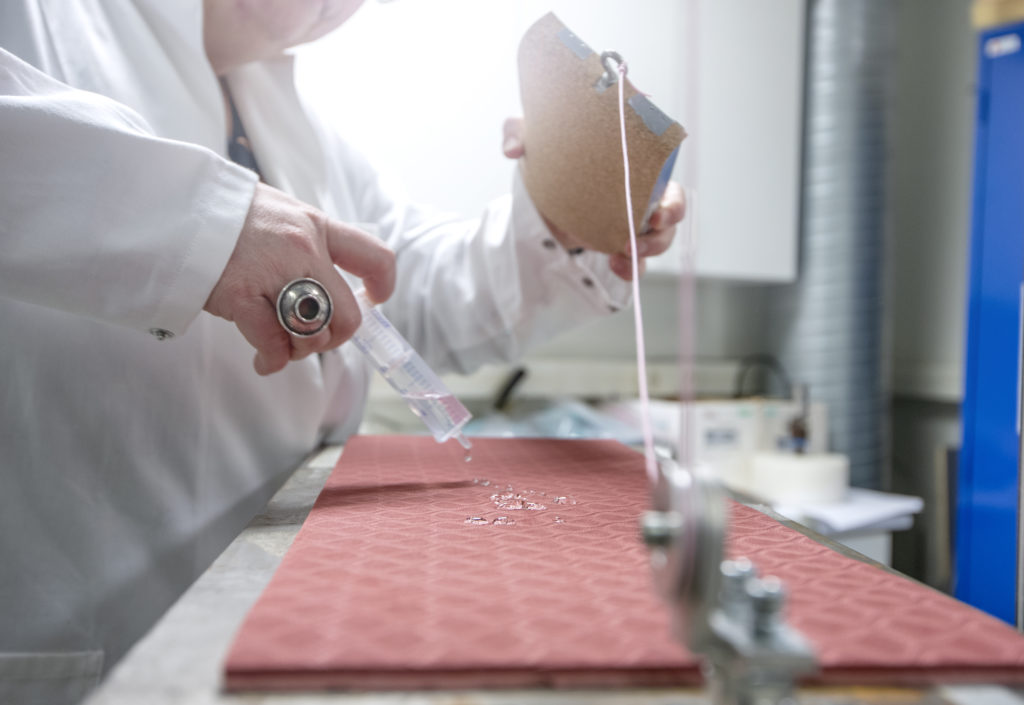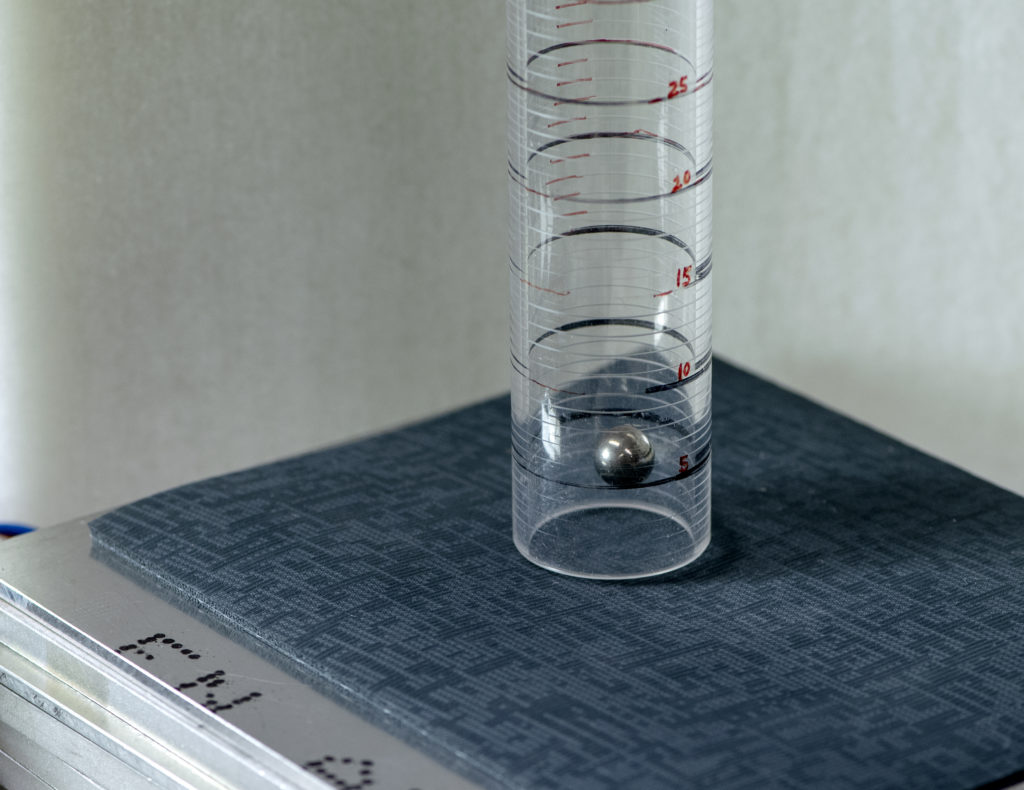To get an idea of the relative quality and performance of the yoga mat, it is tested and compared with a selected premium product in the same category. Yoga mats are tested in two categories:
Hot Yoga
and
Yoga
Hot yoga mats are mats that absorb moisture particularly well. They feature a microfiber or suede coating/surface laminated to a rubber mat. The coating is intended to ensure that moisture such as sweat is absorbed well or that the mat can be sprayed before use to provide better grip. More traditional mats are made of a homogeneous material such as PVC or TPE and do not absorb moisture to the same extent as a hot yoga mat. The laboratory tests are carried out by the Swerea IVF research institute in Mölndal (part of RISE, Research Institutes of Sweden). The tests cover the following areas:
Pretreatment
Washing and drying according to SS-EN ISO 6330:2012 standard. Machine wash at 30°C followed by flat drying at room temperature. Thermal aging in the climate chamber over 14 days at a temperature of 70°C and a relative humidity of 50%.
Slip resistance/friction
The so-called coefficient of friction is measured according to the SS-EN 14882:2019 standard on dry and wet top surfaces as well as on dry bottom surfaces. A cork-covered pulling body weighing 700 grams is pulled over the mat. The force required to move the body is recorded (coefficient of friction). The higher the coefficient, the better the slip resistance. Hot yoga mats achieve significantly better slip resistance on wet surfaces. Moisture does not have the same effect on more traditional yoga mats made of PVC or TPE.

Measurement of the coefficient of friction (slip resistance) on the wet mat. Photo: Anna Sigge
Pressure distribution/hardness
The ability of a yoga mat to distribute pressure through a part of the body is measured for pressure on a smaller area (equivalent to the knee or elbow) and on a larger area (equivalent to the buttocks). The force at which the mat is compressed is measured in kilopascals per millimeter. The higher the value, the harder the mat.
Cleaning
How easy the mats are to clean is tested differently depending on the type of yoga mat. Hot yoga mats usually have a microfiber or suede coating/surface laminated to a rubber mat. These mats are more elastic and can be machine washed at 30°C. More traditional mats are usually made of a homogeneous material such as PVC or TPE and are less elastic, making them less suitable for the washing machine. Instead, what is tested here is how easy they are to dry, which in turn depends largely on the structure on the top.

Measuring impact elasticity by dropping a steel ball onto the mat. Photo: Anna Sigge
Durability Machine wash (hot yoga mats only)
Hot yoga mats usually have a microfiber or suede coating/surface laminated to a rubber mat. The coating is intended to ensure that moisture such as sweat is absorbed well or that the mat can be sprayed before use to provide better grip. These mats are more elastic and can be machine washed at 30°C. To test the durability of the coating and how it is affected by machine washing, the mats are washed 10 times and then visually examined.

